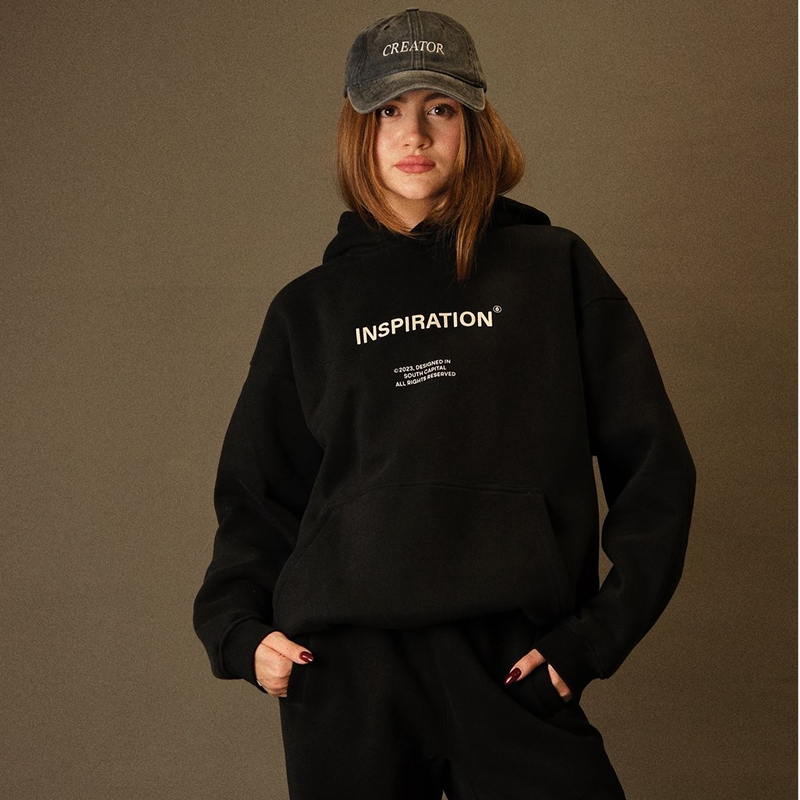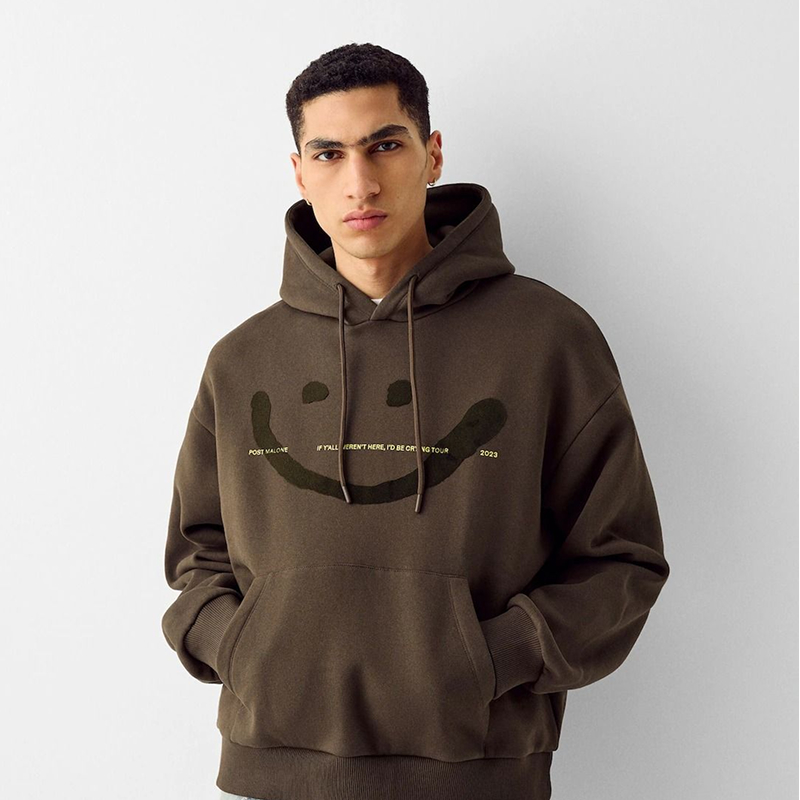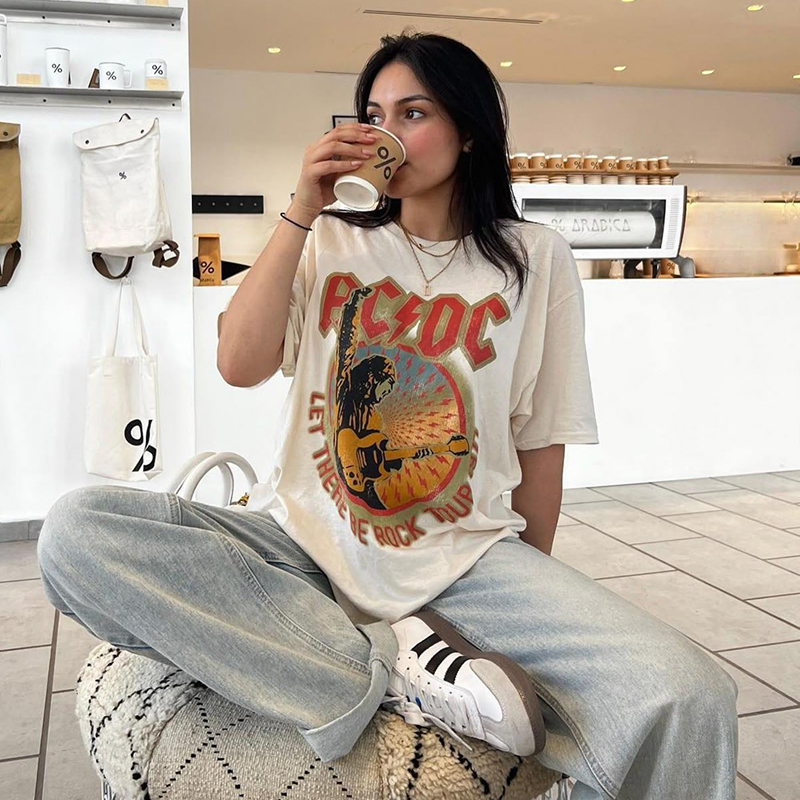Introduction: The Power of Fabric
T-shirts and hoodies may look simple, but their cultural weight and fashion impact are immense. What often goes unnoticed is that their essence lies in fabric. A T-shirt made of crisp organic cotton feels different from one made of polyester blends. A hoodie crafted from heavy fleece carries a different cultural aura than one made of lightweight bamboo fiber.
The materials that shape T-shirts and hoodies do more than affect comfort—they influence fashion trends, environmental impact, cultural meaning, and even consumer psychology. In a world demanding sustainability and innovation, fabrics are not background details—they are the future of fashion.
This essay explores how materials define the journey of T-shirts and hoodies: past, present, and future.
Chapter 1: Cotton – The King of Basics
Historical Dominance
Cotton is the foundation of T-shirts. Since the U.S. Navy adopted cotton undershirts in the early 20th century, the fiber has defined comfort and breathability. Cotton’s softness, versatility, and affordability made it the fabric of choice for both T-shirts and hoodies for decades.
Benefits of Cotton
- Breathable and soft: Keeps the body cool in warm climates.
- Absorbent: Retains sweat, making it ideal for activewear in early years.
- Versatile: Easily dyed and printed, perfect for slogans, logos, and graphics.
Challenges
Cotton production, however, is resource-intensive. A single cotton T-shirt can require over 2,700 liters of water. Conventional cotton farming also relies heavily on pesticides, raising ethical and environmental concerns.
Chapter 2: Polyester and Synthetic Blends
Rise of Performance Fabrics
From the 1970s onwards, polyester began to compete with cotton. Unlike cotton, polyester is durable, quick-drying, and resistant to shrinking. Blends like cotton-polyester became common for hoodies and tees, especially in activewear.
Fast Fashion and Polyester
Polyester’s affordability and durability made it the backbone of fast fashion. T-shirts and hoodies could now be mass-produced cheaply, accelerating global consumption.
Environmental Problems
But polyester is plastic-based. It sheds microplastics with every wash, contributing to ocean pollution. Its non-biodegradable nature makes it a symbol of fashion’s environmental crisis.
Chapter 3: Alternative Natural Fibers
Bamboo
Bamboo fabrics emerged in the 2000s, marketed as eco-friendly. Bamboo grows fast, requires less water, and is naturally antibacterial. Bamboo T-shirts and hoodies feel soft and silky.
However, many bamboo fabrics are chemically processed into rayon, raising sustainability questions.
Hemp
Hemp is one of the oldest fibers in human history. Hemp T-shirts and hoodies are strong, durable, and require far less water than cotton. Once stigmatized because of its association with cannabis, hemp is making a comeback in sustainable fashion.
Linen
Although less common for hoodies, linen has influenced lightweight summer T-shirts. Its cooling properties make it valuable for eco-conscious consumers in hot climates.
Chapter 4: Luxury and Innovation in Fabric
High-End Cotton – Pima and Supima
Luxury T-shirts often use Pima or Supima cotton, prized for long fibers that create ultra-soft, durable fabric. A $100 designer tee often owes its price tag to premium cotton quality.
Fleece and French Terry for Hoodies
Luxury hoodies rely on heavy fleece or loopback French terry. These fabrics are soft, structured, and durable, offering comfort while holding shape—key to elevating a “casual” garment into a luxury item.
Tech-Infused Fabrics
Brands like Nike and Uniqlo are experimenting with fabrics that wick sweat, resist odor, and regulate body temperature. Hoodies with moisture-wicking fleece or T-shirts with UV protection reflect the merging of performance and lifestyle fashion.
Chapter 5: Printing, Dyes, and Expression
Screen Printing and Graphics
The T-shirt’s cultural power depends on printability. Cotton absorbs dyes and inks well, making it ideal for band tees, protest shirts, and streetwear logos.
Dye Innovations
- Natural dyes: Reducing chemical waste in rivers.
- Digital printing: Enabling small-scale, customized runs.
- Sublimation on polyester: Producing vibrant, all-over prints for hoodies.
The future of fashion identity is tied to sustainable printing as much as to fabric itself.
Chapter 6: The Sustainability Crisis
The Scale of the Problem
T-shirts and hoodies are among the most produced garments globally. Billions are made annually, often discarded after minimal use. Their materials determine their environmental footprint.
Sustainable Solutions
- Organic Cotton: Avoids harmful pesticides, but still water-intensive.
- Recycled Cotton and Polyester: Reduces waste but lowers fiber strength.
- Closed-Loop Systems: Companies like Patagonia and Girlfriend Collective recycle old garments into new fabrics.
- Biodegradable Innovations: Research into mushroom leather and algae-based fabrics could redefine hoodies and T-shirts.
Chapter 7: Consumer Psychology and Fabric Perception
The Feel Factor
Consumers judge a T-shirt by its touch. Softness equals quality in the public mind, even if the fabric is less durable.
The Weight Debate
- Lightweight cotton tees: Seen as breathable and modern.
- Heavyweight tees: Associated with durability, authenticity, and streetwear.
Hoodies follow a similar psychology: thick fleece hoodies feel premium, while thin hoodies feel budget.
Chapter 8: The Future of T-Shirt and Hoodie Fabrics
Smart Fabrics
Imagine a T-shirt that monitors heart rate or a hoodie that adjusts its warmth automatically. With wearable technology, fabrics could become functional gadgets.
Digital Fashion
As fashion enters virtual spaces, T-shirts and hoodies will exist as digital garments, made of pixels, not fibers. But even in the metaverse, their real-world fabric heritage influences how we design them digitally.
Toward Circular Fashion
The future lies in circularity: fabrics that can be endlessly recycled, hoodies that biodegrade naturally, T-shirts made from waste fibers.
Conclusion: Fabric as Destiny
The history of T-shirts and hoodies proves that fabric defines fashion. Cotton gave them comfort and accessibility. Polyester expanded their reach but at environmental cost. Hemp, bamboo, and recycled fabrics are steering them toward sustainability.
In the end, these garments are more than casual staples—they are indicators of how society treats resources, values comfort, and pursues identity.
The next chapter of fashion will not be decided by logos or silhouettes but by the fibers that touch our skin. For T-shirts and hoodies, fabric truly matters.



